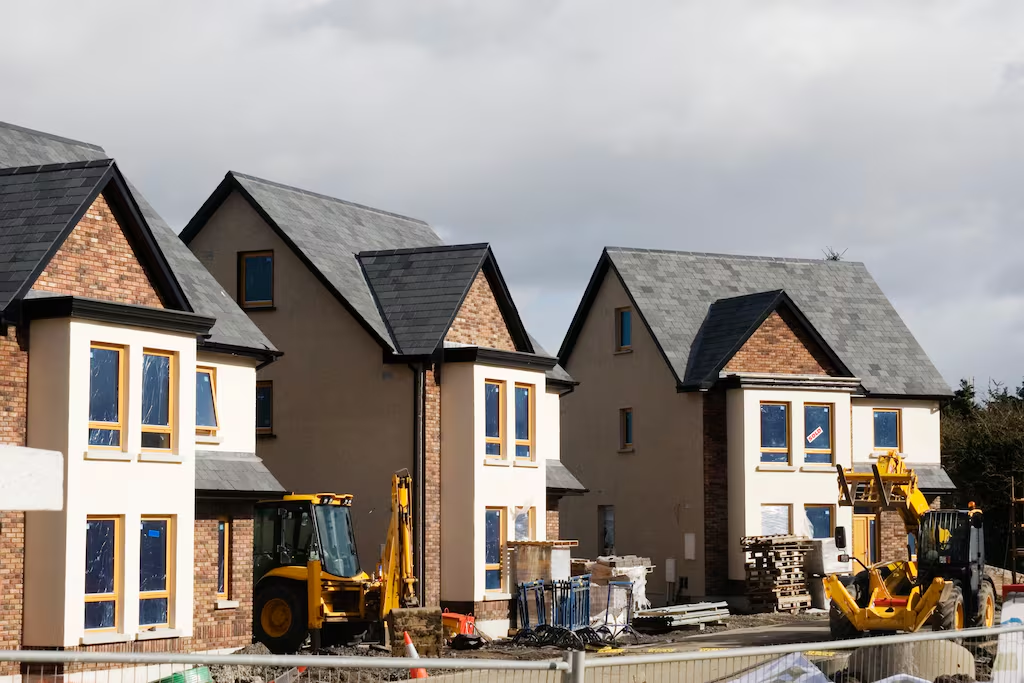As an ageing citizen, I sometimes struggle with newer idioms – and it took me a while to get to grips with the meaning of “gaslighting”. But I think it fits well as a description of the attempts by the former government – mostly now rolled over into the new one – to get us to believe that close to 40,000 homes were being built last year, despite the evidence that this was just not happening.
There was a row in the Dáil about this during the week, with the Opposition accusing Taoiseach Micheál Martin and Tánaiste Simon Harris of misleading voters when they clung to the claim during the election campaign. Recent data, showing the outcome was just 30,330, reignited the debate. The Taoiseach pleaded an honest mistake, though conceding the figures were “extremely disappointing”.
The evidence is not in favour of Fianna Fáil and Fine Gael. To put it mildly. And this matters not only for the obvious reason – that it undermines trust and suggests they were happy to spin yarns to get re-elected. It also points to an underlying belief that Ireland is somehow on the right track on housing and that the voters are happy with this.
Let’s look at the evidence. New house completion figures are published every quarter by the Central Statistics Office (CSO). It was clear from early in the year that there was trouble, with the totals running below 2023 levels. Data published in late July showed completions of 12,677 in the first half of the year, compared to 13,902 in the same period in 2023. Nonetheless, a month later at Béal na Bláth in Co Cork, Harris said that the government would build “almost 40,000″ houses this year. On the same day, there were reports that Deutsche Bank, a big European Investment Bank, had also plumped for a 40,000 figure for 2024.
READ MORE
It seems the Government – and the investment bank – had been encouraged by a surge in commencements of new homes in the spring, in advance of an original end-April deadline, subsequently extended, offering developers waivers on charges if houses were started before the end of the month. Still, predicting 40,000 completions looked like a stretch, requiring some 27,000 new homes to be finished in the second half of the year, compared to 18,600 in the same period of 2023.
If 40,000 looked unlikely in summer, by the autumn the dream had died. On October 24th, the CSO published the third–quarter figures. They weren’t too bad, at more than 8,900 – a few hundred higher than the same period in 2023. But the problem for the previous government was that time was running out. To get anywhere near the 40,000 figure required more than 18,000 completions in the final quarter of last year. And that was never going to happen, as the media reports on the CSO figures noted at the time. The Central Bank of Ireland had already seen the writing on the wall, predicting 32,000 completions for the year in its quarterly bulletin in mid-September. Stockbrokers had started to revise down their forecasts – the most optimistic that I could find as the election was called was about 34,000. A 36,000 estimate by EY/Euroconstruct, referred to by the Taoiseach in the Dáil this week had been published in July, before the midyear CSO figures and was revised sharply lower in December.
Yet the Government continued to deny reality, with then housing minister Darragh O’Brien telling the Dáil in late October that completions would be in the “high 30,000s to low 40,000s this year”. A few days later Harris held to the prediction too, though he did use interesting language, telling the media that the outcome would be “well upwards towards 40,000″. Wriggle room, perhaps? And he added, for the record: “The 40,000 figure came from a letter I received from the Minister for Housing that went to other party leaders, saying that a figure of 40,000 homes was quite possible this year.” This lays responsibility for the figures squarely elsewhere and turns a forecast into a “quite possible”.
Senior ministers held squarely to the close to 40,000 forecast during the election campaign, even if their language was getting fudgy, with Martin, for example, saying in one interview that “‘we’ve now got to about 40,000″ and Harris saying at the Fine Gael campaign launch that the State had got to a point that it was “heading towards” 40,000 completions a year. Even though housebuilding usually picks up in the final quarter, you would suspect that advisers and wiser civil servants had added up the numbers and were advising caution, but the public was still being led to believe that progress was being made.
In the event, the outcome for 2024 was 30,330, even worse than forecasters had anticipated, below the target of 33,450 in the government’s Housing for All plan and not, on any use of the English language, within sight of 40,000.
It was a dire outcome. The Government is now spending billions on housing, but it is hard to disagree with an analysis this week from Davy Stockbrokers this week that “with each passing year, the fundamental problems remain unresolved”. Like the Commission on Housing and other analysts – such as construction consultants Mitchell McDermott – it sees the need for urgent reforms. It seems, in particular, that there are problems in the economics of apartment buildings, which fell 24 per cent last year. International funds are withdrawing, blaming the rent cap and regulatory changes. Higher interest rates – now being reversed – also tempted cash away over the last few years. State cash is being ploughed in to compensate, but are we getting results?
Elsewhere, developers are continuing to deliver housing schemes, but there is still a lack of capacity in the industry to up the numbers, and the familiar planning delays which increase costs and slow delivery persist. Optimistically, Davy believes completions can still rise steadily to 75,000 annually by 2030, but only if vital reforms happen. And Minister for Housing James Browne has promised to push ahead with planning reform and “build, build, build”. But while the figures may be a bit better this year, there seems no reason now to expect a big pick-up, meaning the Government is already on the back foot in its plan to deliver 300,000 new homes by 2030.
Can a Government that refused to accept reality on what was happening in the market in 2024 be smart enough to accept that real change is needed? Or, underneath all the bluster about housing being the number one issue, does it continue to believe that it is doing fine?
















